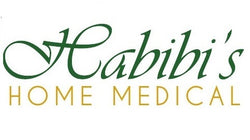In recent years, the demand for personal health monitoring devices has surged. Among the myriad of options available, the personal pulse oximeter has emerged as an indispensable tool for individuals seeking to monitor their health in a convenient and reliable manner. This small and portable device is capable of providing valuable insights into one’s oxygen saturation levels and pulse rate, making it an essential gadget for a wide range of users. In this blog post, we will explore the various uses and benefits of personal pulse oximeters, highlighting why they have become a must-have device for proactive health management.
1. Home Monitoring and Health Maintenance:
One of the primary uses of a personal pulse oximeter is home monitoring and general health maintenance. By simply clipping the device onto a finger or earlobe, individuals can quickly obtain real-time measurements of their blood oxygen saturation (SpO2) levels and pulse rate. Regular monitoring allows individuals to establish baseline readings, detect potential deviations from the norm, and proactively address any health concerns. It is particularly useful for individuals with respiratory conditions, such as asthma or chronic obstructive pulmonary disease (COPD), who can monitor their oxygen levels and take appropriate actions if necessary.
2. Fitness and Sports Performance:
Athletes, fitness enthusiasts, and sports professionals have also embraced the personal pulse oximeter as a tool for optimizing their performance. By monitoring oxygen saturation levels during exercise or training sessions, individuals can gauge their body’s response to physical exertion. This information can help determine appropriate workout intensities, optimize training regimens, and ensure efficient recovery. Additionally, pulse oximeters can be particularly valuable at high altitudes, enabling hikers, climbers, and mountaineers to monitor their oxygen levels and detect early signs of altitude sickness.
3. Sleep Apnea Management:
Sleep apnea, a common sleep disorder characterized by interruptions in breathing during sleep, can significantly impact an individual’s overall health and well-being. Personal pulse oximeters can aid in the management of sleep apnea by providing objective data on blood oxygen saturation levels throughout the night. This information can help individuals and healthcare professionals assess the effectiveness of interventions, such as continuous positive airway pressure (CPAP) therapy, and make necessary adjustments to ensure optimal treatment outcomes.
4. COVID-19 Monitoring:
The ongoing COVID-19 pandemic has underscored the importance of monitoring oxygen levels, as low oxygen saturation can be a critical indicator of the severity of the infection. Personal pulse oximeters have become an invaluable tool for individuals recovering from COVID-19 at home, enabling them to track their oxygen levels and seek medical assistance promptly if they fall below the normal range. Moreover, individuals with underlying health conditions or those who want to monitor their general well-being during the pandemic can use pulse oximeters for regular check-ups and peace of mind.
Personal pulse oximeters have revolutionized the way individuals monitor their health. From home monitoring and fitness optimization to sleep apnea management and COVID-19 recovery, these small devices offer immense value by providing accurate and real-time measurements of blood oxygen saturation levels and pulse rates. By incorporating a personal pulse oximeter into their daily lives, individuals can take proactive steps towards their well-being, identify potential health concerns early on, and ensure optimal performance in various aspects of life. Embracing this powerful health monitoring tool can empower individuals to lead healthier and more informed lives.






